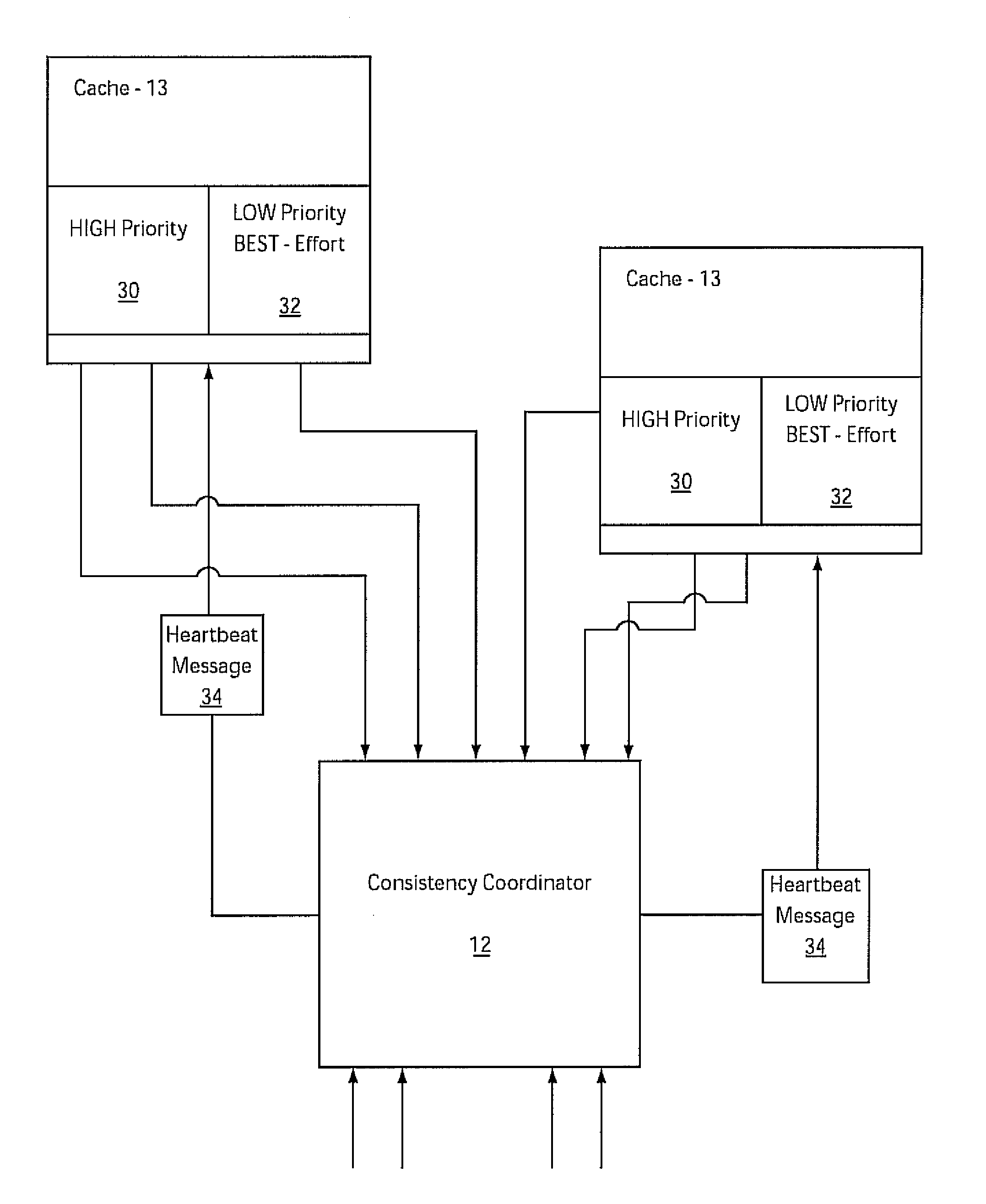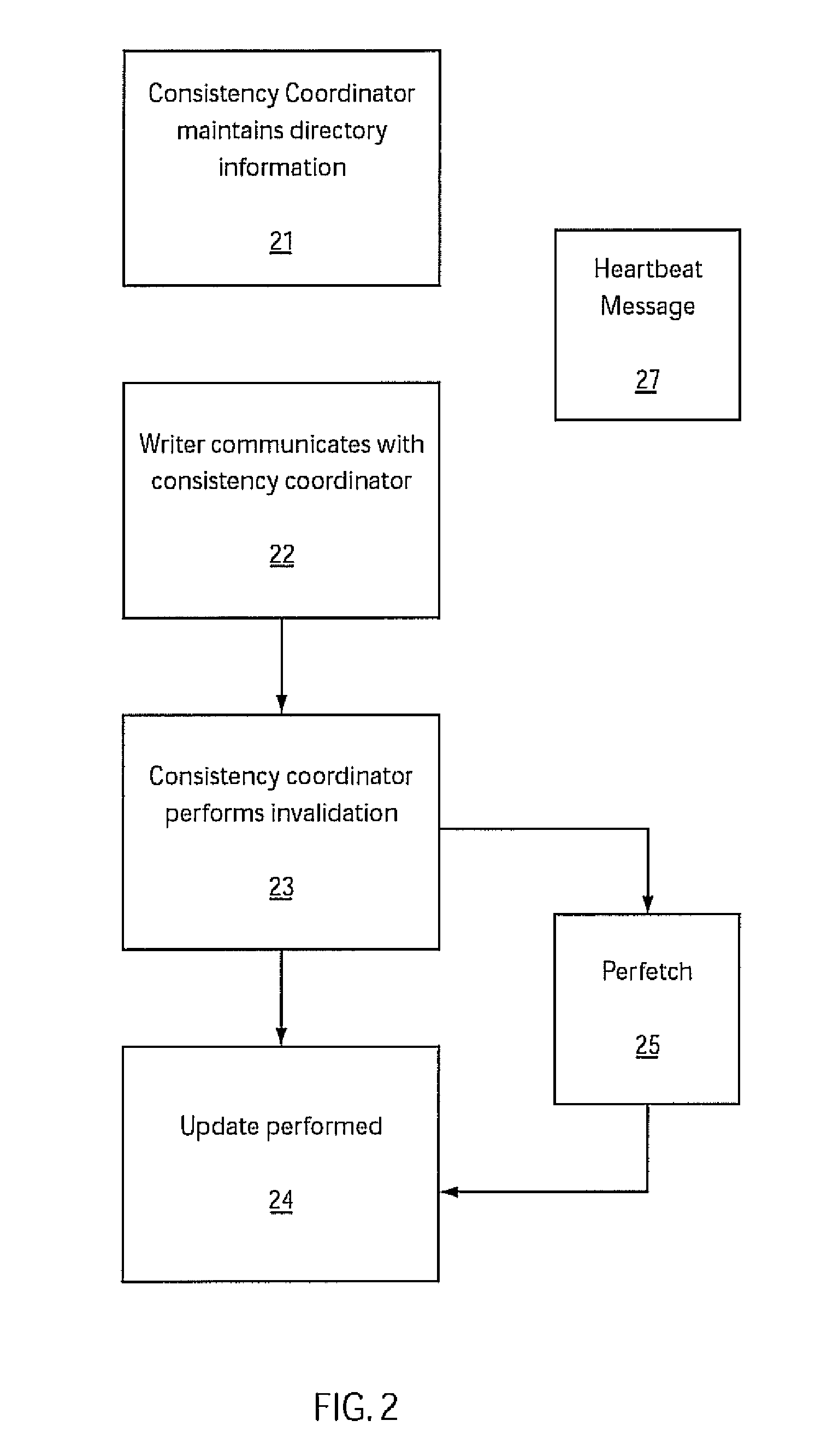System and Method for Achieving Different Levels of Data Consistency
a data consistency and data technology, applied in the field of data storage, can solve the problems of large overhead, large consumption of resources, and large worst-case completion time, and achieve the effect of improving system performan
- Summary
- Abstract
- Description
- Claims
- Application Information
AI Technical Summary
Benefits of technology
Problems solved by technology
Method used
Image
Examples
Embodiment Construction
[0024]When multiple copies of an object exist within a system, a key problem is how to ensure that, upon object updates, clients reading the various copies obtain “consistent” content. The semantics of “consistent” depends on system requirements. At one end, the system can provide strong consistency, ensuring that at anytime, a request to read an object is satisfied with the latest version of the object. At the other end, the system can provide weak consistency, ensuring that a read returns a value for the object, which was current at some point in the past.
[0025]Strong consistency needs a tight coordination of updates of copies of an object. In a system of peer caches, one has to ensure that at the time when a new version of an object becomes available, no peer cache can serve an earlier version. Therefore, all the cached copies of an object should be invalidated before an update takes place in any of the caches.
[0026]Weak consistency does not require the coordination of updates. I...
PUM
 Login to View More
Login to View More Abstract
Description
Claims
Application Information
 Login to View More
Login to View More - R&D
- Intellectual Property
- Life Sciences
- Materials
- Tech Scout
- Unparalleled Data Quality
- Higher Quality Content
- 60% Fewer Hallucinations
Browse by: Latest US Patents, China's latest patents, Technical Efficacy Thesaurus, Application Domain, Technology Topic, Popular Technical Reports.
© 2025 PatSnap. All rights reserved.Legal|Privacy policy|Modern Slavery Act Transparency Statement|Sitemap|About US| Contact US: help@patsnap.com



